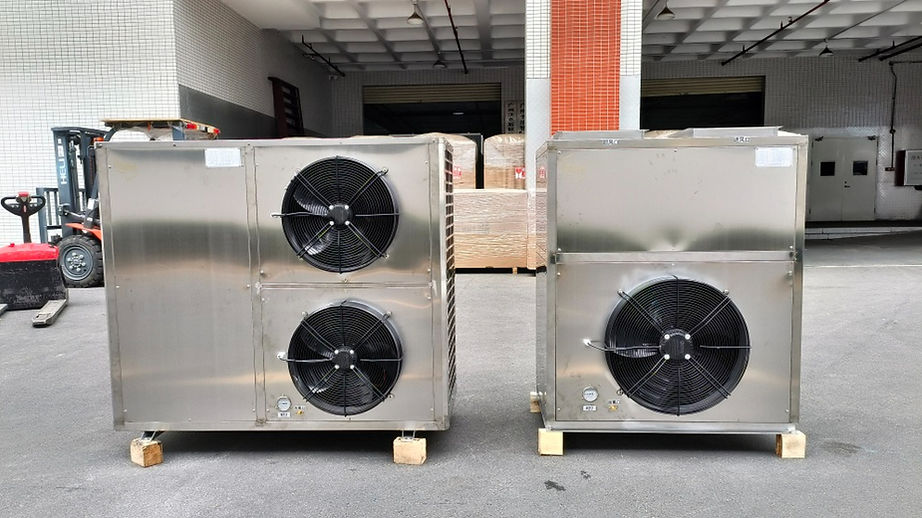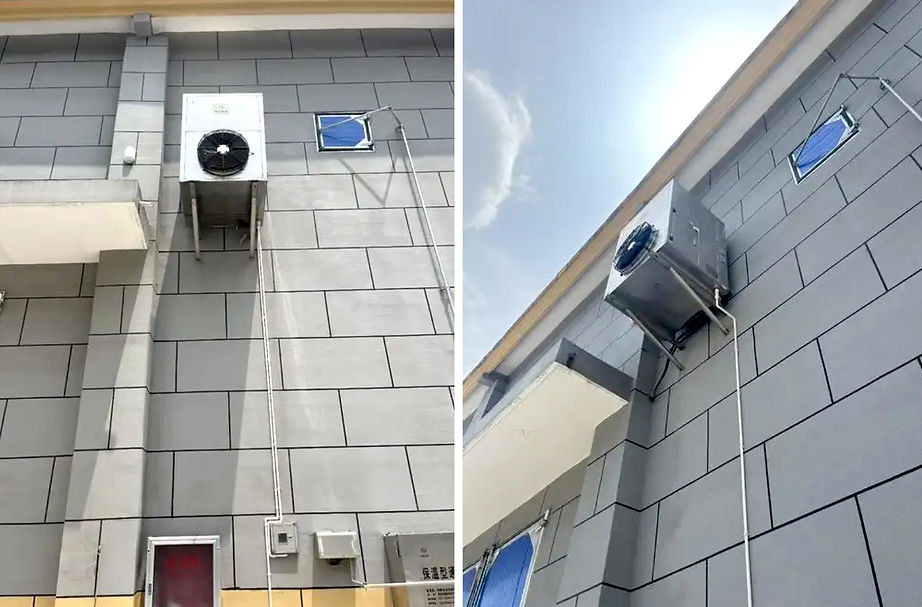
Grain Cooler Units
Introduction:
The grain cooler units are designed for grain cold storage. It is applied to cooling grains such as rice, maize, wheat, barley, soya beans, sunflower seeds, sorghum, cotton seeds, greencoffee beans, lucerne pellets, feed pellets, etc. in grain bins, silos, warehouses, and storages, etc.
The grain cold storage unit helps prevent insect and fungal infestations, minimize dry matter loss, preserve product freshness, and provide a partial drying effect. These benefits are achieved through its cooling capability, ensuring the grain is stored in optimal condition.
With cooling capacity range from 38 KW to 139KW, the grain cooler operates by delivering cold air to the bottom of the silo, cooling the grain from the bottom up while pushing heat upward for exhaust. As cooling progresses, a cooled layer forms and moves upward through the grain mass. By maintaining optimal storage conditions, the grain cooler helps reduce operational and maintenance costs, minimizing labor requirements.

Core Features:
1. Precise Temperature and Humidity Control
The grain air-conditioning system is specifically designed for grain storage, maintaining the internal warehouse temperature at 12–18 °C (in accordance with the recommended values of the Grain Storage Technical Standard) and keeping humidity below 65%. This effectively suppresses mold growth and insect infestation. For example, COFCO Group’s 2022 report shows that the use of grain air-conditioning reduced wheat storage losses from 3% to 0.8%.
2. Energy-Efficient Performance
Equipped with variable frequency technology and a heat exchange system, it consumes 30%–40% less power compared to conventional refrigeration equipment. For instance, the GL-300 model of a leading brand has an average daily power consumption of only 15 kWh (data source: National Agricultural Machinery Quality Supervision and Inspection Center), making it suitable for long-term operation.
3. Dustproof and Corrosion-Resistant Design
The housing is made of galvanized steel, and the internal filter captures dust particles as small as 5 µm, preventing grain debris from clogging the equipment and extending its service life to over 10 years.

Advantages:
1. Extreme Environment Adaptability
The grain air-conditioning system operates reliably in ambient temperatures ranging from –20 °C to 50 °C (compared to conventional air conditioners that typically support –5 °C to 43 °C), making it ideal for high-temperature and high-humidity grain storage conditions.
2. Low Maintenance Requirements
Only 1–2 filter cleanings per year are needed, with no refrigerant refilling required. Compared with standard air conditioners that typically require maintenance every three months, operational and maintenance costs are reduced by 60%.
3. Intelligent Integrated Control
Compatible with grain condition monitoring systems, it can automatically adjust temperature and humidity. For example, when sensors detect temperatures exceeding 20 °C, the system initiates a cooling program within five minutes.

Selection and Usage Recommendations:
1. Match the Storage Capacity
-
Small grain silos (less than 100 tons): Choose models with 5 kW cooling capacity
-
Medium grain silos (100–500 tons): Choose models with 10–15 kW cooling capacity
-
Large grain silos (over 500 tons): Custom units with 20 kW or higher capacity are required
2. Installation Guidelines
-
The air outlet should avoid dead corners in the grain stack
-
The outdoor unit should be installed at least 50 cm away from the wall to ensure proper heat dissipation













